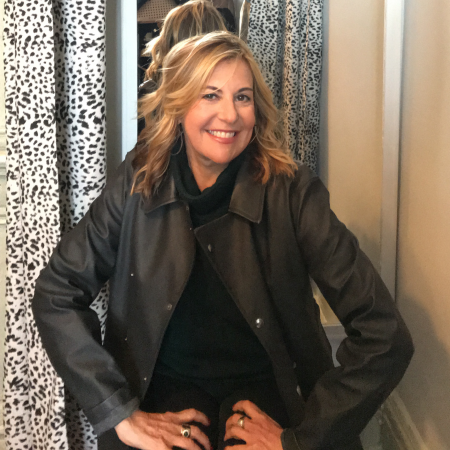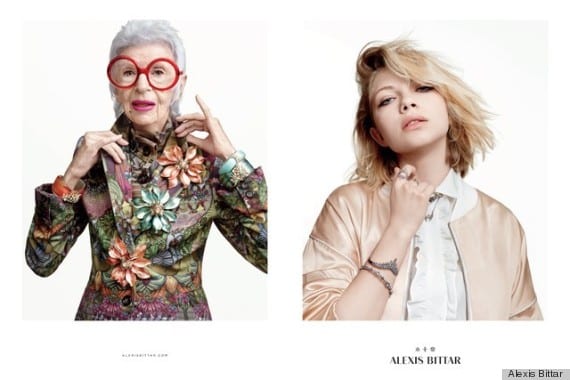Just as I was feeling uncomfortably invisible, several fashion houses in Europe cheered me up by featuring older women in their ads earlier this year. French fashion giant Céline made a splash by casting my literary idol, 80-year-old Joan Didion, as the “respect-worthy” face of its brand, followed by an Yves Saint Laurent campaign featuring one of the great singer-songwriters of my adolescence, Joni Mitchell (who we all hope gets well soon). And, Selfridges launched a unique campaign called “Bright Old Things,” celebrating what it calls the “retirement renaissance.”
In America, older faces remain scarce, other than in sexual dysfunction, vitamin, and insurance marketing, though famous jewelry designer Alex Bittar did recently pair Millennial blogger/actress Tavi Gevinson with 93-year-old fashion icon Iris Apfel in a glimmer of what I believe is a hopeful trend in ageless marketing.
It’s truly puzzling. We are actually the most affluent and activist generation in America’s history (click-to-tweet). Twelve million of us have assets of at least $1 million, with $12-trillion yet in inheritance, though marketers continue to patronize, stereotype or ignore us altogether. At least half of the client briefs I receive specify Millennials as the communications target (hook them young and keep them, so the logic goes), with the other half targeting people 25-54 (family gatekeepers). Unless it’s a pharmaceutical company or the occasional financial services company, brands don’t seem to want to connect with me.
But, perhaps the tide is turning. With Gen X finally turning 50 this year, there are considerably more of us over 50, we are living longer, and better than ever before, spending serious money—an estimated $3.2 trillion each year.
And guess what? We’re not as loyal as business school tells you we are. In a recent survey of Americans 50-plus, Ketchum found that this demographic would rather switch to brands that have recently earned their consideration and loyalty than settle for ones that they’ve used in the past (click-to-tweet). In what we’ve dubbed a “ReMovement,” nearly one in three Americans over 50 say they have or are reassessing many aspects of their lives and removing relationships, behaviors and brands they no longer see as enhancing the lives they want to live.
These brand switchers, according to the U.S. Department of Labor Consumer Expenditure Survey, spend in one year: nearly $400 billion on food; $293 billion on healthcare; $155 billion on entertainment; $104 billon on new vehicles; $44 billion on homecare supplies and $39 billion on personal care products, to just scratch the surface of their buying power. To better reach this vast and lucrative population, Ketchum 50+ identified ways that brands can better connect with a generation of “ReMovers.” For spouses who haven’t been pulling their weight, friends who are high on drama, and brands that are just force-of-habit, it could mean getting left behind. But for companies that want to sell to this large and growing market segment, it’s a big, new age of opportunity.
Click here to see the 10 ways marketers can connect with Americans 50+
For more on Ketchum’s ReMovement Study, and on our new specialty focus on engaging the 50-plus segment, contact Karen Strauss at [email protected] or Andrea Barish at [email protected].




